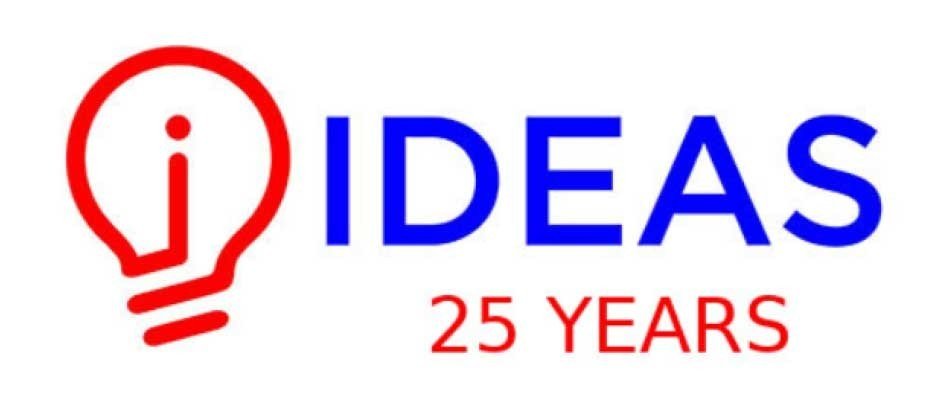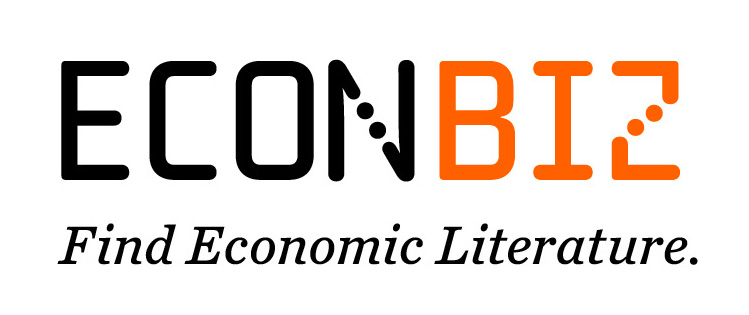| ISSN | 2615-9813 |
| ISSN (số cũ) | 1859-3682 |
Số 229 | Tháng 4/2025
Tác động của đạo đức lãnh đạo đến hiệu quả làm việc của nhân viên văn phòng của các doanh nghiệp tại Thành phố Hồ Chí Minh
Nguyễn Văn Thụy, Lâm Thị Kim Liên, Nguyễn Thị Thanh Hương, Nguyễn Chân Ngọc Anh
Tóm tắt:
Nghiên cứu này xem xét tác động của các nhân tố đạo đức lãnh đạo đến hiệu quả công việc của nhân viên tại các doanh nghiệp trên địa bàn Thành phố Hồ Chí Minh (TP. HCM), đặc biệt trong bối cảnh nền kinh tế vừa trải qua đại dịch Covid-19 và đang trên đà phục hồi. Trên cơ sở phân tích và tổng hợp cơ sở lý luận về đạo đức lãnh đạo, nghiên cứu đề xuất mô hình gồm năm nhân tố cấu thành và đánh giá mối quan hệ của chúng với hiệu quả công việc. Nghiên cứu định lượng được thực hiện với 210 phản hồi của nhân viên làm việc tại khối văn phòng của các doanh nghiệp trên địa bàn TP. HCM. Dữ liệu được phân tích bằng kiểm định độ tin cậy Cronbach’s Alpha thông qua phần mềm SPSS 20.0; mô hình PLS-SEM và các chỉ số AVE, HTMT, VIF bằng phần mềm SmartPLS 4.0. Kết quả nghiên cứu cho thấy sự tôn trọng, tính chính trực và sự công bằng có tác động đến hiệu quả công việc của nhân viên. Trong khi đó, nguyên tắc phục vụ và xây dựng cộng đồng chưa có ý nghĩa thống kê. Nghiên cứu này cũng đề xuất các nhà lãnh đạo cần tập trung vào xây dựng môi trường làm việc tích cực, tính chính trực và sự công bằng trong quá trình lãnh đạo.
Tài liệu tham khảo:
- Arnold, D. G., Beauchamp, T. L., & Bowie, N. E. (2020). Ethical theory and business. Cambridge University Press.
- Bass, B. M., & Avolio, B. J. (1993). Transformational leadership and organizational culture. Public administration quarterly, 112-121.
- Beauchamp, T. L., & Childress, J. F. (1994). Principles of biomedical ethics. Edicoes Loyola.
- Bello, S. M. (2012). Impact of ethical leadership on employee job performance. International Journal of Business and Social Science, 3(11).
- Brown, M. E., Treviño, L. K., & Harrison, D. A. (2005). Ethical leadership: A social learning perspective for construct development and testing. Organizational behavior and human decision processes, 97(2), 117-134. https://doi.org/10.1016/j.obhdp.2005.03.002
- Burns, J. M. (1978). Leadership. New York: Harper & Row.
- Christen, M., Iyer, G., & Soberman, D. (2006). Job satisfaction, job performance, and effort: A reexamination using agency theory. Journal of Marketing, 70(1), 37-150. https://doi.org/10.1509/jmkg.70.1.137.q.
- Ciulla, J. B. (2004). Ethics and leadership effectiveness. The nature of leadership, 11(26), 302-327.
- De Hoogh, A. H., & Den Hartog, D. N. (2008). Ethical and despotic leadership, relationships with leader's social responsibility, top management team effectiveness and subordinates' optimism: A multi-method study. The Leadership Quarterly, 19(3), 297-311. https://doi.org/10.1016/j.leaqua.2008.03.002.
- Dillon, R. S. (2003). Respect. In Stanford Encyclopedia of Philosophy. Retrieved from https://plato.stanford.edu/archives/sum2003/entries/respect.
- Eisenbeiss, S. A. (2012). Re-thinking ethical leadership: An interdisciplinary integrative approach. The Leadership Quarterly, 23(5), 791-808. https://doi.org/10.1016/j.leaqua.2012.03.001.
- Elçi, M., Şener, İ., Aksoy, S., & Alpkan, L. (2012). The impact of ethical leadership and leadership effectiveness on employees’ turnover intention: The mediating role of work-related stress. Procedia-Social and Behavioral Sciences, 58, 289-297. https://doi.org/10.1016/j.sbspro.2012.09.1003.
- Fagiano, D. (1997). Managers vs. leaders: A corporate fable. Management Review, 10, 5–6.
- Freeman, R. E., & Stewart, L. (2006). Developing ethical leadership. Business Roundtable Institute for Corporate Ethics, 9, 1-17.
- Ghaffari, S., Shah, I. M., Burgoyne, J., Nazri, M., & Aziz, J. S. S. (2017). The influence of respect for employees on the relationship between participative leadership and job satisfaction: a case study at Universiti Teknologi Malays. Australian Journal of Basic and Applied Sciences, 11(4), 17-28.
- Gini, A. (1997). Moral leadership: An overview. Journal of business ethics, 16, 323-330. https://doi.org/10.1023/A:1017959915472.
- Greenleaf, R. K. (1970). The servant as leader. Newton Centre, MA: Robert K. Green-leaf Center.
- Hair, J. F., Hult, G. T. M., Ringle, C. M., & Sarstedt, M. (2022). A primer on partial least squares structural equation modeling (PLS-SEM) (3rd ed.). Sage.
- Howell, J. M., & Avolio, B. J. (1992). The ethics of charismatic leadership: submission or liberation? Academy of Management Perspectives, 6(2), 43-54. https://doi.org/10.5465/ame.1992.4274395.
- Hughes, R., Ginnett, R. C., & Curphy, G. J. (1996). Leadership. Chicago, IL: Irwin.
- Iqbal, N., Anwar, S., & Haider, N. (2015). Effect of leadership style on employee performance. Arabian Journal of Business and Management Review, 5(5), 1-6. https://doi:10.4172/2223-5833.1000146.
- Jaksa, J. A., & Pritchard, M. S. (1988). Ethics in communication: Honesty and deception. Belmont, California: Wadsworth.
- Johnson, C. E. (2009). Meeting the ethical challenges of leadership: Casting light or shadow. Los Angeles, CA: Sage.
- Kalshoven, K., Den Hartog, D. N., & De Hoogh, A. H. (2011). Ethical leadership at work questionnaire (ELW): Development and validation of a multidimensional measure. The Leadership Quarterly, 22(1), 51-69. https://doi.org/10.1016/j.leaqua.2010.12.007.
- Khademfar, M., & Amiri, S. A. (2013). The relationship between ethical leadership and organizational performance (Small Review on Malaysian Studies). International Journal of Business and Social Science, 4(1).
- Kirkpatick, S. A., & Locke, E. A. (1991). Leadership: do traits matter?. Academy of management perspectives, 5(2), 48-60. https://doi.org/10.5465/ame.1991.4274679.
- Kitchener, K. S. (1984). Intuition, critical evaluation and ethical principles: The foundation for ethical decisions in counseling psychology. The counseling psychologist, 12(3), 43-55. https://doi.org/10.1177/0011000084123005.
- Komives, S. R., Lucas, N., & McMahon, T. R. (2009). Exploring leadership: For college students who want to make a difference. John Wiley & Sons.
- Kruse, K. (2013). What is leadership? Forbes Magazine, 3.
- Liden, R. C., Wayne, S. J., Zhao, H., & Henderson, D. (2008). Servant leadership: Development of a multidimensional measure and multi-level assessment. The Leadership Quarterly, 19(2), 161-177. https://doi.org/10.1016/j.leaqua.2008.01.006.
- Lussier, R. N., & Achua, C. F. (2016). Leadership: Theory, Application, & Skill Development. Cengage Learning.
- Lusch, R. F., & Serpkenci, R. R. (1990). Personal differences, job tension, job outcomes, and store performance: A study of retail store managers. Journal of Marketing, 54(1), 85-101. https://doi.org/10.1177/002224299005400106.
- Northouse, P. G. (2016). Leadership: Theory and practice. Sage publications.
- Obicci, P. A. (2014). Effect of ethical leadership on employee performance in uganda. Journal of Management and Science, 4(4), 245-263. https://doi.org/10.26524/jms.2014.22.
- Ogbonna, E., & Harris, L. C. (2000). Leadership style, organizational culture and performance: Empirical evidence from UK companies. International Journal of Human Resource Management, 11(4), 766-788. https://doi.org/10.1080/09585190050075114.
- Olesia, W. S., Namusonge, G., & Iravo, M. (2014). Servant leadership: The exemplifying behaviours. IOSR Journal of Humanities and Social Science, 19(6), 75-80.
- Pamfilie, R., Petcu, A. J., & Draghici, M. (2012). The importance of leadership in driving a strategic Lean Six Sigma management. Procedia-Social and Behavioral Sciences, 58, 187-196. https://doi.org/10.1016/j.sbspro.2012.09.992.
- Piccolo, R. F., Greenbaum, R., Hartog, D. N. D., & Folger, R. (2010). The relationship between ethical leadership and core job characteristics. Journal of Organizational Behavior, 31(2‐3), 259-278. https://doi.org/10.1002/job.627.
- Ponnu, C. H., & Tennakoon, G. (2009). The association between ethical leadership and employee outcomes-the Malaysian case. EJBO-Electronic Journal of Business Ethics and Organization Studies, 14(1).
- Rawls, J. (1971). A theory of justice. Cambridge, MA: The Belknap Press of Harvard University Press.
- Reinke, S. J. (2004). Poverty Alleviation Course_Reading 8_service before self: Towards a theory of servant-leadership.
- Resick, C. J., Hanges, P. J., Dickson, M. W., & Mitchelson, J. K. (2006). A cross-cultural examination of the endorsement of ethical leadership. Journal of Business Ethics, 63(4), 345-359. https://doi.org/10.1007/s10551-005-3242-1.
- Rost, J. C. (1995). Leadership: A discussion about ethics. Business ethics quarterly, 129-142. https://doi.org/10.2307/3857276.
- Ringle, C. M., & Sarstedt, M. (2016). Gain more insight from your PLS-SEM results: The importance-performance map analysis. Industrial Management & Data Systems, 116(9), 1865–1886. https://doi.org/10.1108/IMDS-10-2015-0449.
- Russell, R. F., & Stone, A. G. (2002). A review of servant leadership attributes: Developing a practical model. Leadership & organization development journal, 23(3), 145-157. https://doi.org/10.1108/01437730210424.
- Sabir, M. S., Iqbal, J. J., Rehman, K. U., Shah, K. A., & Yameen, M. (2012). Impact of corporate ethical values on ethical leadership and employee performance. International Journal of Business and Social Science, 3(2), 163-171.
- Salanova, M., Agut, S., & Peiró, J. M. (2005). Linking organizational resources and work engagement to employee performance and customer loyalty: the mediation of service climate. Journal of applied Psychology, 90(6), 1217. https://doi.org/10.1037/0021-9010.90.6.1217.
- Sergiovanni, T. J. (1992). Moral leadership: Getting to the heart of school improvement. San Francisco: Jossey-Bass.
- Shafique, I., N Kalyar, M., & Ahmad, B. (2018). The nexus of ethical leadership, job performance, and turnover intention: The mediating role of job satisfaction. Interdisciplinary Description of Complex Systems: INDECS, 16(1), 71-87.
- Thuy, N. V., & Van, C. V. (2022). The impact of authentic leadership on employee’s engagement at Tan Son Nhat Operation Center in the COVID-19 period: The mediating role of job satisfaction. Science & Technology Development Journal: Economics- Law & Management, 6(2), 2427-2439. https://doi.org/https://doi.org/10.32508/stdjelm.v6i2.945.
- Thuy, N. V. (2023). Satisfaction of university students in academic teamwork: evidence of a situational leadership approach. Science & Technology Development Journal: Economics-Law & Management, 7(2), 4252-4262. https://doi.org/10.32508/stdjelm.v7i2.1171.
- Toor, S. U. R., & Ofori, G. (2009). Ethical leadership: Examining the relationships with full range leadership model, employee outcomes, and organizational culture. Journal of business ethics, 90, 533-547. https://doi.org/10.1007/s10551-009-0059-3.
- Treviño, L. K., Brown, M., & Hartman, L. P. (2003). A qualitative investigation of perceived executive ethical leadership: Perceptions from inside and outside the executive suite. Human relations, 56(1), 5-37. https://doi.org/10.1177/0018726703056001.
- Yukl, G. A. (2010). Leadership in organizations (7th ed.). Upper Saddle River, NJ: Prentice-Hall.
- Yang, C., Ding, C. G., & Lo, K. W. (2016). Ethical leadership and multidimensional organizational citizenship behaviors: The mediating effects of self-efficacy, respect, and leader–member exchange. Group & Organization Management, 41(3), 343-374. https://doi.org/10.1177/10596011155949 .
The Impact of Leadership Ethics on Employee Performance in Enterprises in Ho Chi Minh City
Abstract:
This study examines the impact of ethical leadership factors on employee performance within enterprises in Ho Chi Minh City, particularly in the context of post-COVID-19 economic recovery. Drawing from established theoretical foundations, the study proposes a conceptual model encompassing five dimensions of ethical leadership and their relationship with employee job performance. Quantitative data were collected from 210 office employees across various enterprises in the city. The analysis was conducted using SPSS 20.0 for Cronbach’s Alpha reliability testing, and SmartPLS 4.0 for PLS-SEM, along with AVE, HTMT, and VIF assessments. The findings indicate that respect for others, integrity, and justice have a statistically significant positive effect on employee performance. In contrast, the dimensions of serving others and building community did not show a significant impact. Based on these results, the study recommends that leaders prioritize cultivating a workplace grounded in respect, integrity, and fairness to enhance employee performance and organizational effectiveness.







